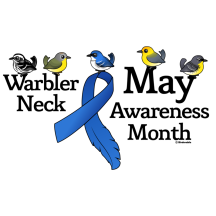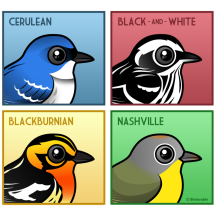The Cerulean Warbler is a small songbird. Adult males have pale cerulean-blue upperparts and white underparts with a black necklace across the breast. They also have black streaks on the back and flanks. Females and immature birds have greyer or greenish upperparts, a pale stripe over the eye, and no streaking on the back and no necklace. All of theses birds, regardless of their age, have wing bars and a thin pointed bill.
Their breeding habitats are mature deciduous forests in eastern North America and they migrate to forested mountain areas in South America. Their nests are cup-shaped, and are placed on a horizontal branch high in a hardwood tree.
They forage actively high in trees, sometimes catching insects in flight.
Brazilian (Português brasileiro)
Mariquita-azul
ミズイロアメリカムシクイ (Mizuiroamerikamushikui)








































